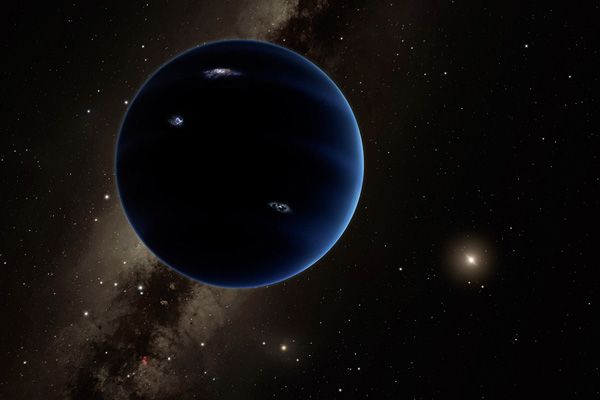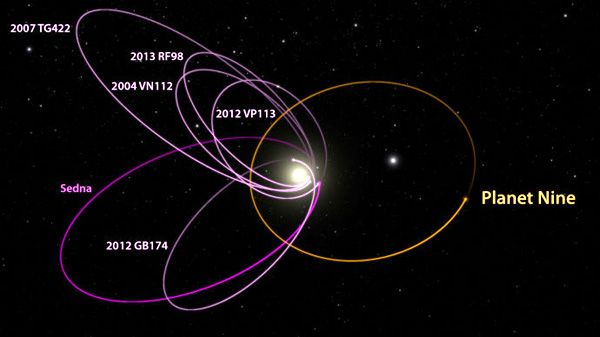
Caltech / R. Hurt (IPAC)
Assuming that astronomers confirm that this mysterious Neptune-sized world does exist, I wonder how long it would take a spacecraft traveling as fast as New Horizons did when it flew past Pluto last July to reach this distant object? Planet Nine presumably takes 10,000 to 20,000 years to orbit the Sun, so I reckon that even with the help of NASA's powerful Space Launch System rocket (SLS)—which makes its first flight (to the Moon) in 2018—a robotic probe will take many generations (RE: at least half a century) to make the long sprint across the solar system towards this Kuiper Belt body. Hopefully, if it exits, we'll get a nice (but highly, highly-pixelated) image of it with NASA's James Webb Space Telescope...also due for launch around the same time as SLS' maiden flight two years from now.
****
Evidence for a Distant Giant Planet in the Solar System (Press Release)
Recent analyses have shown that distant orbits within the scattered disk population of the Kuiper belt exhibit an unexpected clustering in their respective arguments of perihelion. While several hypotheses have been put forward to explain this alignment, to date, a theoretical model that can successfully account for the observations remains elusive.
In this work we show that the orbits of distant Kuiper belt objects cluster not only in argument of perihelion, but also in physical space. We demonstrate that the perihelion positions and orbital planes of the objects are tightly confined and that such a clustering has only a probability of 0.007% to be due to chance, thus requiring a dynamical origin. We find that the observed orbital alignment can be maintained by a distant eccentric planet with mass greater than ~10 Earth masses, whose orbit lies in approximately the same plane as those of the distant Kuiper belt objects, but whose perihelion is 180 degrees away from the perihelia of the minor bodies.
In addition to accounting for the observed orbital alignment, the existence of such a planet naturally explains the presence of high perihelion Sedna-like objects, as well as the known collection of high semimajor axis objects with inclinations between 60 and 150 degrees whose origin was previously unclear. Continued analysis of both distant and highly inclined outer solar system objects provides the opportunity for testing our hypothesis as well as further constraining the orbital elements and mass of the distant planet.
Source: Konstantin Batygin & Michael E. Brown - arxiv.org/
****

Caltech / R. Hurt (IPAC); [Diagram created using WorldWide Telescope]

No comments:
Post a Comment